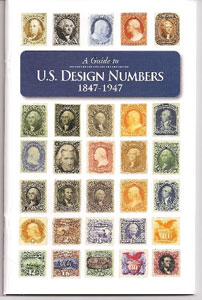 (Newport Beach, California) – To attract new stamp collectors and assist
novices who may be confused by a huge number of complicated, nearly-identical,
minor varieties, Professional Stamp Experts (PSE) of Newport Beach California
has created a simplified system for building a basic collection of United States
postage stamps by major design type.
(Newport Beach, California) – To attract new stamp collectors and assist
novices who may be confused by a huge number of complicated, nearly-identical,
minor varieties, Professional Stamp Experts (PSE) of Newport Beach California
has created a simplified system for building a basic collection of United States
postage stamps by major design type.
“It is hoped this fresh approach to U.S. philately will open the door
for thousands of new collectors to enjoy this fascinating and time-honored hobby,”
said Michael Sherman, President of PSE, the philatelic authentication and grading
service that is a division of Collectors Universe, Inc. (NASDAQ: CLCT).
Entitled, “A Guide to U.S. Design Numbers (USD),” the new collection-building
structure focuses on 435 regular-issue U.S. postage stamps that were issued from
1847 to 1947 and intended for use on letters or parcels.
PSE has produced a full-color, 56-page booklet with photos of the stamps and a
cross listing of the USD numbers and their corresponding numbers in the Scott
Standard Postage Stamp Catalogue. The Scott numbers are used with permission of
Scott Publishing Co., a subsidiary of Amos Press, Inc.
Free copies of the booklet now are available to collectors, stamp clubs and dealers.
“Beginners and even intermediate collectors can sometimes get frustrated
and confused when confronted by 5, 10 or even 30 different varieties of stamps
that at first glance all look alike. Varieties are wonderful, and an important
part of philately, but you don’t have to be an advanced specialist to enjoy
stamps,” said Sherman.
“The USD system is based on clarity and simplicity It’s a 435-stamp
‘type set’ representing the major designs, denominations and the most
commonly encountered colors of the first century of U.S. stamps. Acquiring one
nice example of each type is a realistic, sufficient collecting goal for many
beginning to even advanced collectors. It’s a fresh look at a classic hobby.
We need more young collectors, and reducing the hobby’s overall complexity
with a streamlined roadmap is an inviting and attractive way to do it.”
Sherman emphasized that the U.S. Design Number format “is not intended as
a replacement or substitute for the time-honored and comprehensive Scott Numbering
System.”
He consulted with various collectors and dealers as he and PSE developed the USD
format over the past two years. In addition to the booklet, PSE plans to soon
publish a USD system album printed on acid-free paper.
“It’s the same successful way the coin collecting hobby has encouraged
budding numismatists to find enjoyment building ‘type sets’ of 19th
century or 20th century coins by date, denomination and major design. After collectors
are attracted to the hobby by starting to assemble basic collections, they can
always expand their collections if they are intrigued by special issues, such
as the hundreds of silver dollars cataloged by VAM (Van Allen-Mallis) variety.
It certainly can work the same way to attract and encourage new stamp collectors,”
Sherman explained.
“Assembling a ‘traditional’ collection of U.S. stamps, heretofore,
required the acquisition of a substantial number of nearly identical issues where
the differences between stamps were often subtle, such as confusing color shade
variations, invisible-to-the-naked-eye watermarks or a tiny difference in the
gauge of the perforations. A collection based on the simplified USD Number system
will be truly interesting to assemble and colorful to view, yet still will be
a challenging set to build, particularly in high grade.”
For a free copy of “A Guide to U.S. Design Numbers, 1847 – 1947,”
contact Professional Stamp Experts, P.O. Box 6170, Newport Beach, CA 92658. Phone:
(949) 567-1346. E-mail: PSE@collectors.com.
Online: www.PSEstamp.com.